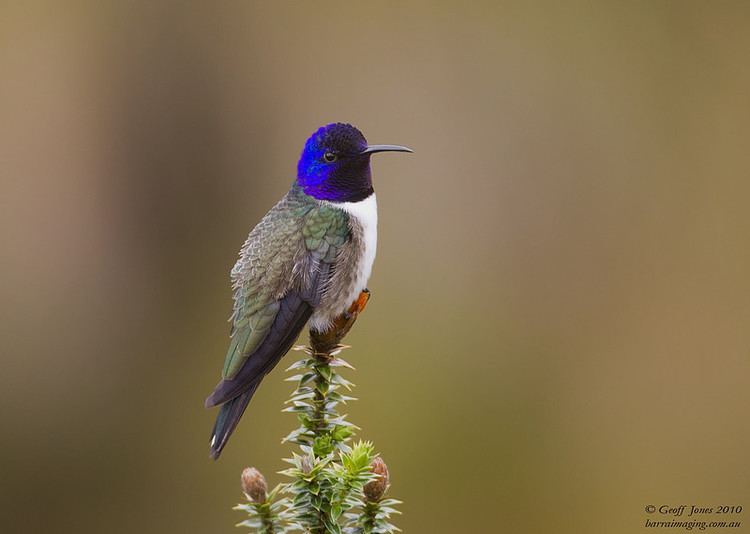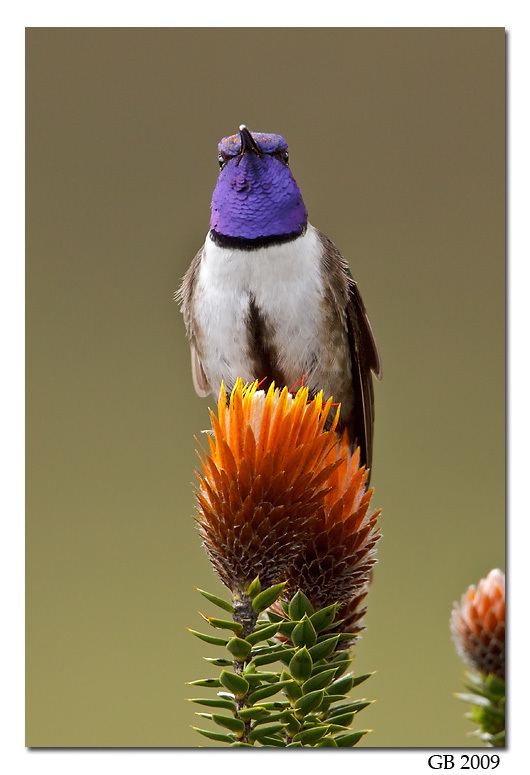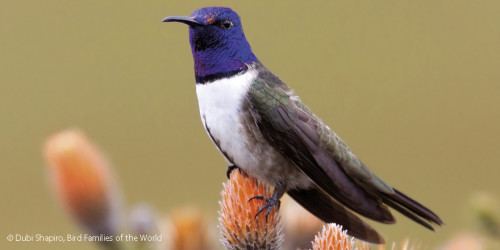Genus Oreotrochilus Higher classification Hillstar | Phylum Chordata Family Trochilidae Scientific name Oreotrochilus chimborazo Rank Species | |
 | ||
Similar Hillstar, Hummingbird, Amethyst‑throated sunangel, Bird, Buff‑tailed coronet | ||
Ecuadorian hillstar mpeg
The Ecuadorian hillstar (Oreotrochilus chimborazo) is a species of hummingbird. It is native to the Andes of Ecuador and extreme southern Colombia.
Contents

Its main habitat type is high-altitude mountain grassland between 3500 and 5200 meters. It has been observed nesting at high on the cliffs of the volcano Cotopaxi.

It is known to nest colonially.
Ecuadorian hillstar on cotopaxi 23 aug 2014
Subspecies

Despite its small range, the Ecuadorian hillstar comprises two subspecies: O. c. jamesonii, which is distributed in most of the species range, and O. c. chimborazo, which is endemic to the volcano Chimborazo and surrounding regions. The diagnostic difference between both subspecies is the color of the throat in males, which is bright green in O. c. chimborazo and purple in O. c. jamesonii. This remarkable case of geographic differentiation has caught the attention of many prominent biologists, among which was Alfred Russell Wallace. In Island Life, Wallace wrote that the ranges of these subspecies were among the most wonderfully cases of restricted ranges of any bird.

The presence of the two subspecies is presumed to be related to the complex topography of the Andes, which may have presented numerous opportunities for geographic isolation. Any geographic barrier between both subspecies, however, seems to be absent in the present. Past isolation tied to the varying climate of the Pleistocene may have promoted differentiation within the range of the Ecuadorian Hillstar. Such isolation may not have occurred a long time ago, because no notable differences between the subspecies have been found in mitochondrial DNA.

A third subspecies, O. c. soederstromi, is thought to be endemic to the volcano Quilotoa in Ecuador. This subspecies, however, has not been recorded since the time of its description. Moreover, the description fits that of an intergrade between the other two subspecies. Both O. c. chimborazo and O. c. jamesonii have been recorded at the type locality of O. c. soderstromi. This third subspecies, thus, may not be a valid one.

